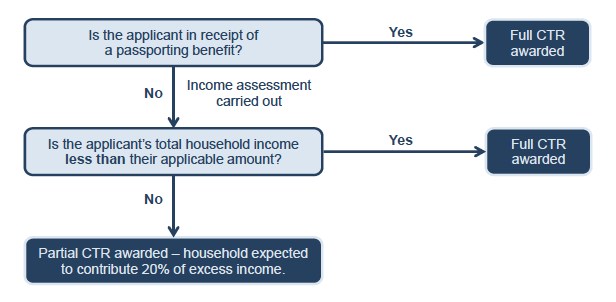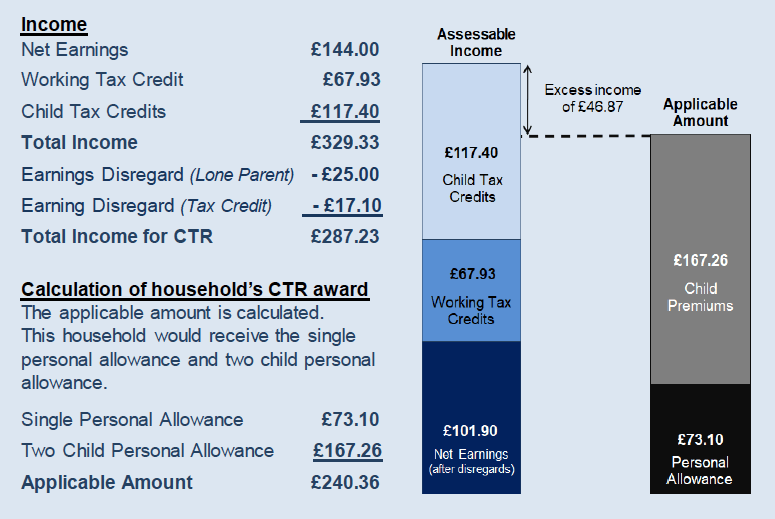Council Tax Reduction in Scotland 2019-2020
Council Tax Reduction (CTR) awarded by age, household structure, income sources and employment status, the deprivation index, and Council Tax band in the financial year from April 2019 till March 2020.
1. Introduction
The CTR scheme provides lower income households with a reduction in their Council Tax liability. The reduction can be any proportion of the liability, up to and including 100 per cent (i.e. the household has their Council Tax liability reduced to zero and pays no Council Tax).
CTR data is reported quarterly from CTR extracts provided by local authorities on a monthly basis. This publication provides the most recent quarterly data on the number of CTR recipients and the weekly income forgone. It also provides more detailed analysis of additional characteristics and weekly awards for March 2020 CTR data.
The Scottish Government introduced CTR on 1 April 2013 to replace Council Tax Benefit (CTB). CTB had been the responsibility of the Department for Work and Pensions (DWP) until it was abolished by the UK Welfare Reform Act 2012. Since introduction, entitlement to CTR in Scotland replicated, as far as possible, previous entitlement to CTB. The only notable exception to this was in 2017, when the scheme was changed to increase the child element of the applicable amount within the scheme by 25 per cent.
Wider changes also occurred to Council Tax in Scotland in 2017. The multipliers for dwellings in Council Tax bands E to H were changed and a new CTR relief was established for low to middle-income households in properties affected by the changes. In addition, Council Tax which had been frozen between 2008-09 and 2016-17 in line with an agreement reached between the Scottish Government and the Convention of Scottish Local Authorities (COSLA) began to rise. At the end of this period the 2017-18 and 2018-19 Local Government Finance settlements included agreement between the Scottish Government and local government for locally determined Council Tax increases to be capped at 3 per cent in cash terms. In 2019-20 they were capped at 3 per cent in real terms, which was 4.79 per cent in cash terms.
1.1 How CTR awards are calculated
Entitlement to CTR and the amount awarded is based on the characteristics and income of the applicant and their household. Figure 1 shows the process an application goes through to calculate whether CTR should be awarded and, if so, how much. Please note that this is a simplified version and does not include some additional features of the scheme (such as capital rules, non-dependant deductions and the second adult rebate).

Figure 2: Illustration of CTR Calculation 2019-20
A single parent, with two children aged 12 and 14, and lives in a Band C property in Edinburgh.
The Band C Council Tax liability was £16.33 after single person discount of 25%.
Household weekly income consisted of:
- Net Earnings of £144.00
- Working Tax Credit of £67.93
- Child Tax Credits £117.40

This household’s excess income is then £46.87 (£287.23 - £240.36).
As the total income is greater than the applicable amount, partial CTR is awarded and the household is expected to contribute 20% of their excess income towards their Council Tax liability. So the Weekly Household Contribution is £9.37 (20% of £46.87).
The weekly CTR is £6.96 (£16.33 - £9.37) and they contribute £9.37.
Contact
Email: eddie.chan@gov.scot
There is a problem
Thanks for your feedback